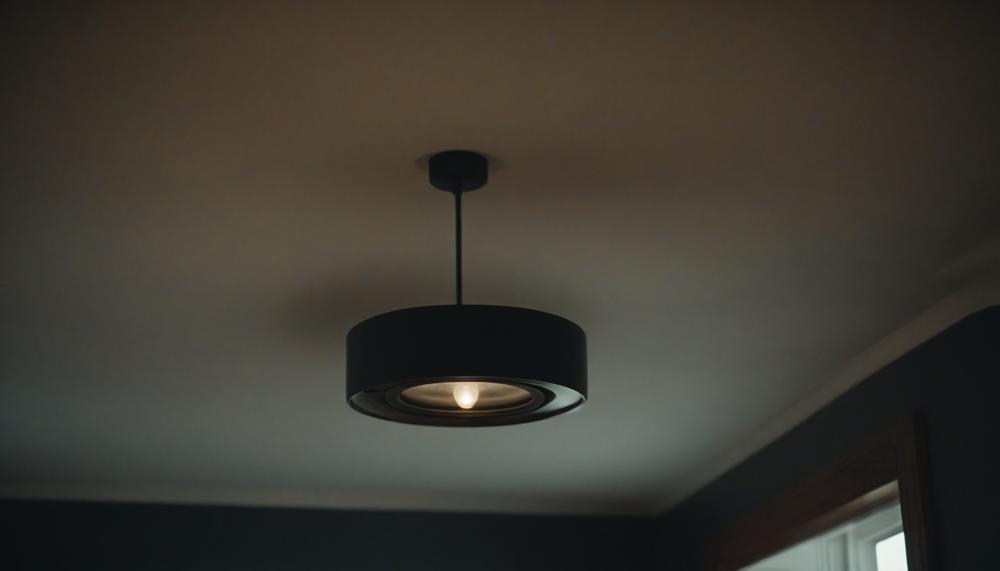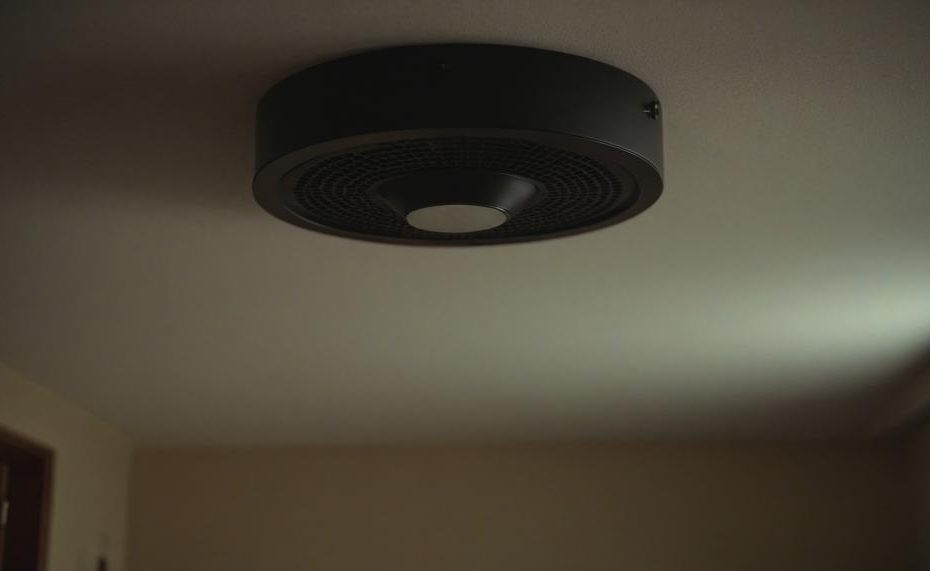Can you safely hang gymnastics rings from your ceiling if you weigh 90 kg? Yes, but with some critical considerations. Attaching heavy items like gymnastics rings to your ceiling requires careful evaluation of your ceiling’s structure and the materials involved. This is particularly important when dynamic movements, such as swinging, are involved, which can place additional stress on the attachment points.
In a typical Canadian wood-framed house, the key is to secure the rings to the ceiling joists, which are the horizontal beams that support the structure of the ceiling. Joists are designed to handle significant weight, but it’s crucial to ensure they can bear the dynamic load you’re planning to apply.
Here’s what you need to keep in mind:
- Identify the Joists: Use a stud finder to locate the joists in your ceiling.
- Assess the Joists’ Condition: Check for any signs of damage or weakness in the wood.
- Choose the Right Hardware: Use heavy-duty eye bolts or lag screws designed to handle dynamic loads.
- Test the Load: Before full use, conduct a static test by gradually applying weight to ensure the joists can handle the load.
Understanding these factors will help you determine if your ceiling can safely support the gymnastics rings, ensuring both your safety and the integrity of your home.

Contents
What Kind of Ceiling Do You Have in Your Garage?
The type of ceiling in your garage plays a crucial role in determining the weight capacity for hanging objects. Garages typically have three main types of ceilings: drywall, exposed joists, and drop ceilings.
Here’s how each type affects the weight capacity for hanging objects:
| Ceiling Type | Characteristics | Weight Capacity Considerations |
| Drywall Ceiling | Consists of gypsum boards attached to the ceiling joists. |
|
| Exposed Joists | Open ceiling with visible wooden beams. |
|
| Drop Ceiling | Features a grid of tiles suspended below the structural ceiling. |
|
Key Considerations
- Joist Location: Regardless of the ceiling type, always locate the joists before mounting heavy objects. Stud finders can help pinpoint joists.
- Weight Distribution: Spread the load across multiple joists to prevent overloading a single point, which could damage the ceiling.
- Dynamic Loads: For activities involving movement (e.g., gymnastics rings), ensure the joists can handle dynamic loads, which exert more stress than static loads.
- Ceiling Hoists: If using a ceiling hoist, check both the hoist’s weight limit and the ceiling’s structural capacity. Some hoists can lift over 1000 kg, which may exceed the safe limit for most garage ceilings.
For more detailed information on garage ceilings and their weight capacities, you might find this guide on garage organization helpful.
Installing overhead storage (location, location, location)
Determining the best location for installing overhead storage and ensuring it can support the weight you want to hang from your ceiling involves several crucial steps:
| Step | Action | Details |
| 1 | Identify Ceiling Type | Determine if your ceiling is drywall or concrete to choose appropriate anchors. |
| 2 | Locate Structural Support | Use a stud finder to locate joists or beams, and mark these spots. |
| 3 | Calculate Weight Capacity | Refer to typical weight limits: 15-20 lbs/sq ft for drywall, up to 40 lbs/sq ft for concrete, 50 lbs+ for exposed joists. |
| 4 | Professional Consultation | Seek advice from a structural engineer for accurate weight limits. |
| 5 | Install Proper Hardware | Use the right anchors: toggle or molly bolts for drywall, concrete anchors for concrete ceilings. |
| 6 | Distribute Weight Evenly | Ensure that the load is spread across multiple points to avoid overloading. |
By following these steps, you can confidently install overhead storage that is both safe and functional. Always remember to err on the side of caution and consult professionals when in doubt.
When should you call an expert?
- Type of Ceiling Construction: Different ceilings have varied capacities. For instance, wooden joists handle weight differently than metal beams or drywall ceilings. Understanding your ceiling’s construction helps in gauging its load-bearing capacity.
- Weight Rating of Overhead Storage Rack: If you plan to use an overhead storage rack, check its weight rating. This rating indicates the maximum load the rack can support, which must align with the ceiling’s strength.
- Weight of Ceiling Components: The existing weight of ceiling elements such as lights, fans, and drywall must be accounted for. These add to the overall load, reducing the available capacity for additional items.
- Purpose of Hanging Items: Determine whether you intend to use the ceiling for light storage or heavy lifting. This will impact the required strength and stability of the ceiling.
- Safety Precautions and Limitations: Especially in garage ceilings or other specialised areas, consider safety guidelines and structural limitations. Certain areas may have restrictions based on usage and local building codes.
Is Using Your Garage Ceiling For Storage Safe?
Ensuring that your garage ceiling can support the weight of items you want to hang requires several crucial steps:
Determine the Ceiling’s Weight Capacity
The ceiling’s construction type significantly impacts its load-bearing capacity. Standard residential garages typically use ceiling joists or trusses, which can support different weights.
Joists are horizontal structural members, while trusses are triangular units that distribute weight more effectively.
Inspect the Existing Structure
Check the current condition of your ceiling, including joists, trusses, and any existing damage or weaknesses. Any cracks, sagging, or damage could indicate compromised strength.
Calculate Total Load
Include the weight of the overhead storage system, the items you plan to store, and any other ceiling fixtures like lights and drywall.
For example, if your storage rack is 50 lbs and you plan to store 200 lbs of items, your total load is 250 lbs.
Select the Right Storage Solution
Opt for storage systems specifically designed for overhead use and rated for the weight you need.
Avoid DIY solutions with thin metal brackets unless they are proven to be sturdy enough for your needs.
Use Wall Studs for Additional Support
Where possible, anchor storage units to wall studs to distribute the weight more evenly and reduce the burden on the ceiling alone.
Edge-mounted storage can provide better support than central ceiling mounts.
Professional Assessment
Consider hiring a professional to assess your ceiling’s structural integrity and recommend the best storage solutions. They can provide insights on load distribution and reinforcement needs.
Installation and Safety
Follow all manufacturer instructions meticulously when installing overhead storage.
Double-check the installation for security, and periodically inspect the setup for any signs of stress or wear.
Can My Garage Ceiling Support a Hoist?
To determine if your garage ceiling is strong enough to support a hoist for hanging heavy items, follow these key steps:
| Step | Description | Action |
| Identify Ceiling Type | Determine the material and structure of your garage ceiling. | Inspect and note the type (drywall, exposed beams, etc.). |
| Check Joists/Trusses | Examine the condition and spacing of the joists or trusses. | Ensure they are sturdy and well-maintained. |
| Calculate Total Load | Sum the weight of the hoist, items, and existing loads. | Ensure the total is within safe limits. |
| Consult Specifications | Review the hoist’s weight capacity and compatibility. | Match with ceiling capacity. |
| Professional Assessment | Get an expert evaluation of your ceiling’s strength. | Hire a structural engineer or contractor. |
Conclusion
Safely hanging weight from your ceiling involves understanding your ceiling’s structure and using the right hardware. Key factors include identifying and assessing the condition of your joists, which are vital for supporting heavy loads. Using a stud finder to locate joists and choosing heavy-duty hardware like eye bolts or lag screws are essential steps. Always conduct a static load test before applying dynamic loads, especially for items like gymnastics rings, to ensure the joists can handle the weight.
Different ceiling types in garages, such as drywall, exposed joists, and drop ceilings, have varying weight capacities. Drywall alone supports less weight, so always anchor heavy loads to the joists underneath. Exposed joists offer more capacity, ideal for heavier items. For drop ceilings, avoid direct mounting; instead, secure the load to the structural ceiling above.
Distributing weight across multiple joists and considering dynamic loads ensures safety and prevents overloading. For specialized tasks or heavy installations, consult a structural engineer or contractor to evaluate your ceiling’s integrity and recommend appropriate solutions.





